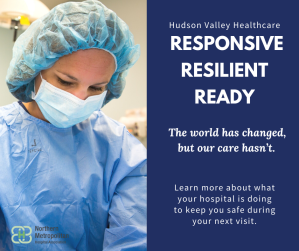Despite dramatic decrease in claims costs due to the pandemic, health insurers seek rate increase for 2021
Earlier this month, New York’s insurance plans asked the State Department of Financial Services to consider a weighted average rate hike of 11.7 percent in the individual market and a weighted average increase of 11.4 percent in the small group market for 2021. The 2021 average rate increase request is higher than last year’s average request of 8.4 percent in the individual market. This request perplexes those of us in the healthcare business.
With fewer claims costs because elective procedures were halted for two months during the peak of the coronavirus crisis and fewer individuals venturing out, even now, to access healthcare, shouldn’t there be a decrease in rates?
What’s the Reason?
Some plans cite increased costs due to COVID-19 as the reason for the rate hikes. Fidelis Care, which requested the second largest increase at 18.8 percent, says it took into account the increased risk and uncertainty caused by the pandemic when calculating its 2021 rate increase request. Fidelis does business in nearly all of New York’s 62 counties.
New York State requires health insurers to seek pre-approval for premium rate hikes. Plans must present reasonable justification for their increase requests. Typically, plans will look at prior year claims costs and activity, medical cost trends, and the medical inflation rate when determining rates for the upcoming year. The state’s Medical Loss Ratio regulation also comes into play. It requires plans to spend 82 percent of premium dollars on direct care and quality improvement activities. If plans exceed this ratio, money is returned to consumers. The New York State Department of Financial Services ultimately decides the percent increase it will allow. We will know that in August.
The State Acts
While it is true that health plans did not and still do not collect co-pays for COVID testing when an in-network provider is used, the sheer drop in patient claims for routine care and cancelled elective surgeries more than balanced this. The state issued a Circular Letter on April 22, 2020 directing health plans to take a variety of steps to alleviate the financial burden imposed by COVID-19 on hospitals and help them with their cash flow. Some of these steps included no retrospective reviews, no medical necessity denials, resolution of appeals within 60 days, and a requirement that plans work directly with hospitals and provide some financial assistance, especially to those hospitals that were severely cash-strapped. Nevertheless, many hospitals report that plans have not acted in good faith to ease the cash crisis, despite the health plans’ ever-growing reserves. The letter’s directives expired June 18th but an extension is under negotiation.
Predicting Health Costs
PwC’s Health Research Institute recently issued a report that detailed several economic scenarios that could play out next year. The report projects that the medical cost trend could range from a high of 10 percent to a low of 4 percent.
The surge in telehealth has also driven down costs for health insurers. These visits are reimbursed at a lower rate. In the Northeast, telehealth claims increased by 4300 percent, during the peak of the pandemic, according to nonprofit Fair Health’s monthly telehealth tracker .
We can’t figure out how COVID-19 imposed undue financial burden on health insurers. Let’s hope the State Department of Financial Services keeps that fact in mind when it reviews the plans’ rate increase requests for 2021.
About the Suburban Hospital Alliance of New York State
The Suburban Hospital Alliance of New York State advocates on behalf of hospitals in the Hudson Valley and Long Island regions. It engages key lawmakers and regulatory decision-makers in Albany and Washington to ensure reasonable and rational health care policy prevails.
About the Nassau-Suffolk Hospital Council (NSHC)
The Nassau-Suffolk Hospital Council represents the not-for-profit and public hospitals on Long Island. It works in conjunction with the Suburban Hospital Alliance of New York State to advance legislative and regulatory priorities. NSHC serves as the local and collective voice of hospitals on Long Island.
About the Northern Metropolitan Hospital Association (NorMet)
The Northern Metropolitan Hospital Association represents the not-for-profit and public hospitals in the Hudson Valley region. It works in conjunction with the Suburban Hospital Alliance of New York State to advance legislative and regulatory priorities. NorMet serves as the local and collective voice of hospitals in the Hudson Valley.


